Reinforced or EXTRA LOAD (XL) tyres are intended for heavy vehicles or those equipped with powerful engines. The sidewalls of reinforced tyres are more rigid than standard tyres, known as "SL" for "Standard Load". The rigidity of the sidewalls allows them to support higher loads, pressures, and stresses.
How can you identify a reinforced tyre?
A reinforced tyre has specific markings on its sidewall such as: REINF, REINFORCED, XL, EXTRA LOAD, XLD, RFD, or RF. The "XL" standard is gradually replacing other standards.
What does the XL marking on a tyre mean?
"XL" stands for "Extra Load", meaning the tyre can support a higher weight and greater pressures.
Understanding HL vs XL markings
The HL (High Load) marking refers to tyres designed to meet the weight requirements of heavier vehicles such as electric vehicles, vans, SUVs, and similar models.
HL tyres can support a significantly higher load than XL tyres without increasing inflation pressure or changing wheel dimensions.
Thanks to an extra-reinforced casing, this technology ensures optimal stability and improved durability, providing an essential safety solution for heavy vehicles.
What are the advantages of a reinforced tyre?
- Better longevity.
- Better resistance to potential impacts.
- Better vehicle control.
- Better traction and power transmission.
- Better resistance to mechanical stresses: acceleration, braking, high speed, sharp turns.
What are the disadvantages of a reinforced tyre?
- Increased noise by about 1dB.
- Increased rolling resistance leading to a slight increase in fuel consumption.
- Increased tyre weight and therefore theoretically higher fuel consumption.
- Theoretically, they are considered less comfortable, but this remains imperceptible for most drivers.
Which reinforced tyres should you buy for your car?
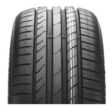
Learn more
Learn more
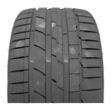
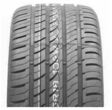
Learn more
Learn more

Learn more
Learn more
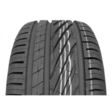
Learn more
Learn more
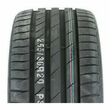
Learn more
Learn more
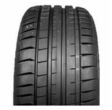
Learn more
Learn more

Learn more
Learn more
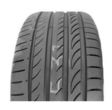
Learn more
Learn more
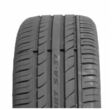
Reinforced tyres are necessary for some sports vehicles, SUVs, powerful sedans, or utility vehicles. These tyres withstand more load and stress than others.
What are the characteristics of reinforced tyres?
A reinforced tyre is designed to support higher load and inflation pressure than those recommended by the manufacturer for the standard version of a given size. To help you better understand, let's take the example of a 205/55 R16 tyre. By default, standard (SL) tyres of this size have a load index of 91, meaning a maximum load capacity of 615 kg. But for reinforced versions, this index is increased to 94, meaning the tyre can support a maximum load of 670 kg. The supported pressure also increases from 2.5 to 2.9 bars.
Reinforced tyres are characterized by:
- A load capacity index carefully set by manufacturers in collaboration with ETRTO experts (European Tyre and Rim Technical Organisation);
- A reinforced tread;
- A design incorporating highly resistant materials.
Reinforced tyres can be identified by the special markings on their sidewall: Extra Load (XL), Reinforced (REINF), RF, RFD, or EXL. The first inscription is the most common on the market and tends to replace the others, which are becoming increasingly rare.
What are the advantages of reinforced tyres?
Given their particularly robust structure, reinforced tyres offer many advantages to motorists. Here are a few of them.
Longevity:
The components of a reinforced tyre are more solid than those of an SL tyre. Thus, for the same use, XL tyres logically have a much longer lifespan than a standard tyre. These tyres can even cover more kilometers without showing signs of damage or wear. Unlike their standard counterparts, reinforced tyres are suitable for very intensive use. Just follow the manufacturer's recommended air pressure guidelines, and you're good to go.
Resistance:
As their name suggests, tyres with reinforced treads are extremely resistant. They can easily withstand dynamic impacts that usually occur when the vehicle abruptly hits a curb or any other surface that is not level with the road. The risks of scratches or cuts are therefore greatly reduced in these situations.
XL tyres also resist very well to mechanical stresses inherent to driving: sharp turns, sudden braking, acceleration…
High driving performance:
Reinforced tyres offer high performance in terms of traction and grip. Their rigid structure positively influences the car's behavior in various situations (mainly braking and turning), optimizing its stability. Finally, XL tyres also ensure an efficient transfer of the car's power to the road.
All this allows the driver to better control their car and, consequently, to have good road holding and optimal driving comfort.
When should you choose reinforced tyres?
It is important to know when reinforced tyres are worth buying, as not all vehicles need them.
Reinforced tyres are recommended when you often drive with heavy loads: goods, passengers… In this case, using XL tyres will help you avoid frequently changing your tyres. This advice generally applies to transport vehicles, station wagons, and vans.
These tyres are also recommended for motorists who own vehicles with very powerful engines. XL tyres will help them better control their car in turns and especially to accelerate better.
To know if your vehicle should only run with reinforced tyres, refer to its user manual. You will find all the necessary information regarding the car's approval.
What criteria should you consider when choosing good reinforced tyres?
Like any other type of tyre, the choice of reinforced tyres should not be made randomly. You must necessarily consider certain elements:
- The dimensions of your original tyres;
- The technology integrated into the tyre;
- The rolling resistance of the wheel;
- The reputation of the manufacturer;
- The season…
Here is everything you need to know about each of these criteria.
Dimensions:
Fitting new tyres that are too wide or too high can have adverse effects on your driving comfort. That is why it is important to consider the dimensions of your original tyres when choosing your new reinforced tyres, especially if it is the first time you are making a change.
To find the dimensions recommended by the manufacturer for your tyres, consult the vehicle's user manual. You can also find this information in your fuel flap.
Of course, it is possible to choose alternative sizes to replace your old tyres. But in this case, make sure to respect the limits (margins) set by the vehicle manufacturer.
Technology:
Tyre manufacturers are constantly developing new technologies to improve the on-road performance of their products. Thus, before purchasing a reinforced tyre, do not hesitate to find out about the technologies it incorporates. This will allow you to know if the product you are about to choose will really meet your needs.
For example, some manufacturers integrate technologies into their equipment that optimize vehicle performance when braking on wet roads. This type of tyre will suit you perfectly if you often drive in rainy weather.
Other designers offer tyres that are resistant to punctures thanks to self-sealing technology. If you travel long distances for work, these types of tyres can be very useful. They will prevent you from getting stuck after punctures in isolated areas.
How to identify the technologies integrated into a tyre? Generally, this information is found in the descriptive text that accompanies the product (if you are buying online). If you have doubts, you can also ask the seller for more details.
Rolling resistance:
The rolling resistance of a tyre refers to the energy expended to keep it moving (at a constant speed) when it is in contact with the ground. It is closely related to the thickness of the tread. The thicker the tread, the higher the rolling resistance, which will result in significant fuel and energy consumption.
Since reinforced tyres naturally have thick shoulders, it is important to check that the model you are about to choose has low rolling resistance. How to know? Simply check the product's technical sheet.
The manufacturer:
It is important not to overlook the manufacturer when choosing a tyre. Generally, the brand of a tyre says a lot about its quality. To be sure of having superior quality tyres that will meet your expectations and to drive safely, turn to the most recognized manufacturers: PIRELLI, MICHELIN, HANKOOK, CONTINENTAL, BRIDGESTONE, GOODYEAR…
To buy reinforced tyres, prefer products from these major brands as they generally incorporate the latest innovations in the tyre sector. This is a significant performance guarantee.
Depending on your needs and budget, you can also choose other less known brands that also offer good quality equipment.
The season:
Reinforced tyres are not necessarily all-season tyres designed to be used all year round. There are XL tyres for winter and others for summer. You must take this into account when making your choice. Choose tyres suitable for the climatic conditions of each season to enjoy optimal driving comfort.
tyreleader.ie, your supplier of high-end reinforced tyres
For any motorist looking to change their tyres, tyreleader.ie offers more than 10,000 references from different brands to meet all your needs. Whether you need winter, summer, or all-season reinforced tyres, you can make your choice from our catalogue. We offer free delivery from two identical tyres.
If you wish, you can also benefit from a fitting service at one of our partner garages. We cover the entire national territory.






